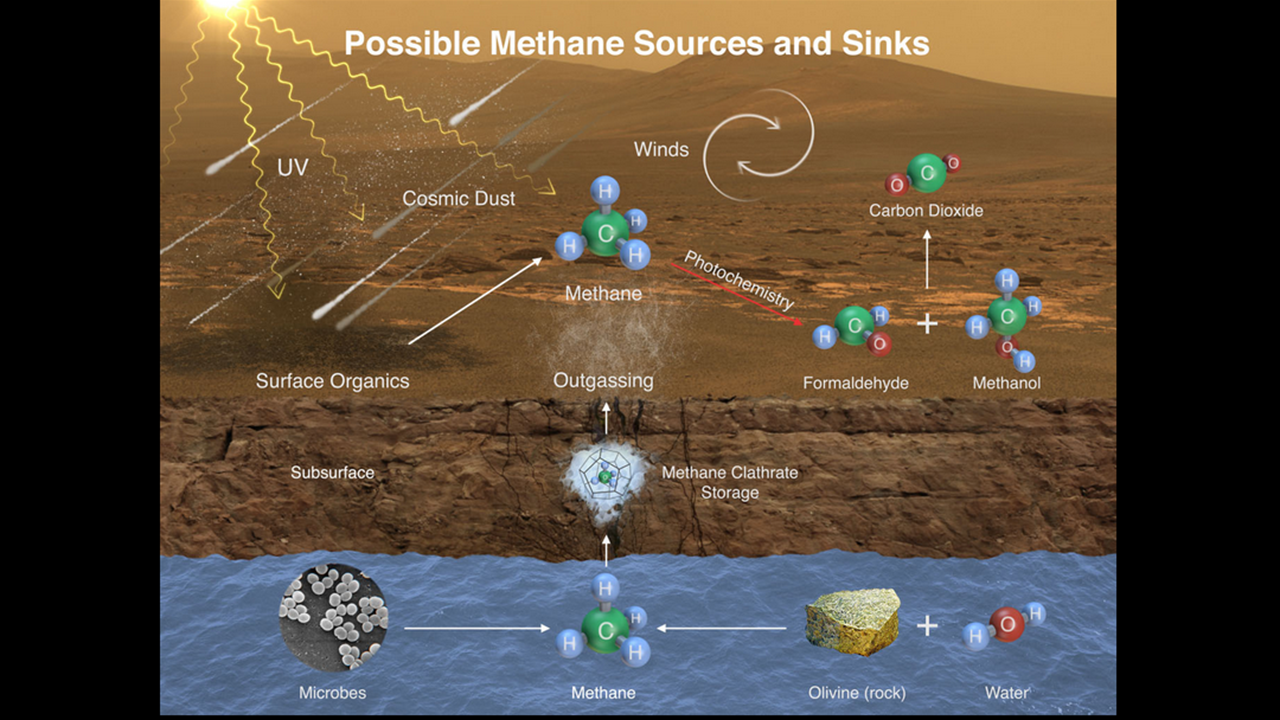NASA may have blown through almost $400 million on a test tower, but who cares, because the American space agency might have found evidence of live on Mars. In a meeting of the American Geophysical Union on Tuesday NASA shared the latest findings of its Curiosity rover, which detected a spike in methane — a gas, Scientific American reports, that is “a possible sign of life.”
A change in the air: I detected a 10x spike of methane in Mars' atmosphere #AGU14 http://t.co/TsMs5LEW8b pic.twitter.com/v71ei8XDAx
— Curiosity Rover (@MarsCuriosity) December 16, 2014
From Scientific American:
Across Mars and within Gale Crater, where Curiosity is slowly climbing a spire of sedimentary rock called Mount Sharp, the methane exists at a background concentration of slightly less than one part per billion by volume in the atmosphere (ppb). However, for reasons unknown, four times across a period of two months the rover measured much higher methane abundances, at about ten times the background level. Further in-situ studies of the methane emissions could help pin down whether Mars has life, now or in its deep past, though it is unclear when or if those studies will ever take place.
It will be a long time before scientists determine the source of the methane, which could be produced geochemically, or biologically:
Most of Earth’s methane comes from anaerobic bacteria living in low-oxygen environments, such as stagnant water and the guts of animals, though abiotic processes such as hot water flowing through mineral-rich rock can also produce the gas. Mars’s minuscule methane background is broadly consistent with what should be produced by ultraviolet light striking the carbon-rich debris of meteorites, comets, and interplanetary dust that periodically fall to the Red Planet. But this mechanism cannot easily explain the methane spikes that Curiosity observed, as it calls for large, very recent meteoritic impacts or airbursts in the vicinity of Gale Crater that would leave clear signs which vigilant orbiting spacecraft should have spotted by now. Alternatively, the Curiosity team suggests the methane spikes may come from unseen, buried deposits of clathrates, lattices of ice that can trap gases such as methane in their crystalline structure.
Other theories suggest that the methane is floating in from a larger source elsewhere on the planet, and the less-promising suggestion that the methane may even be coming from the rover itself.
“What the Curiosity results really confirm is that we still do not understand the release and persistence of methane on Mars,” said NASA senior scientist Michael Mumma. “In a nutshell, this is very exciting because it very clearly shows methane has a source on the planet.”
NASA’s full report of the findings in Mars’s Gale Crater is published in Science.
Certified organics! I detected organics for the 1st time on the surface of Mars #AGU14 http://t.co/TsMs5LEW8b pic.twitter.com/AVk5Wxp5G0
— Curiosity Rover (@MarsCuriosity) December 16, 2014
(Image: NASA/JPL)



